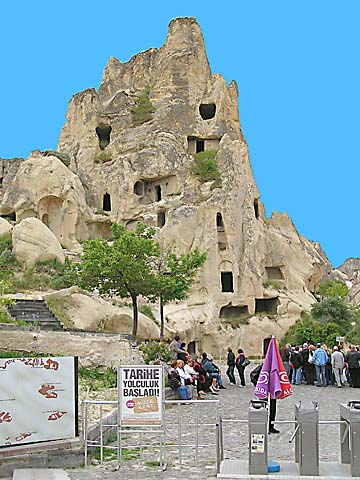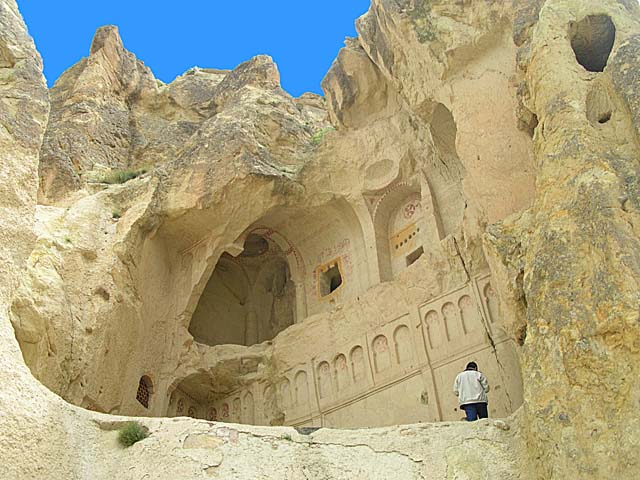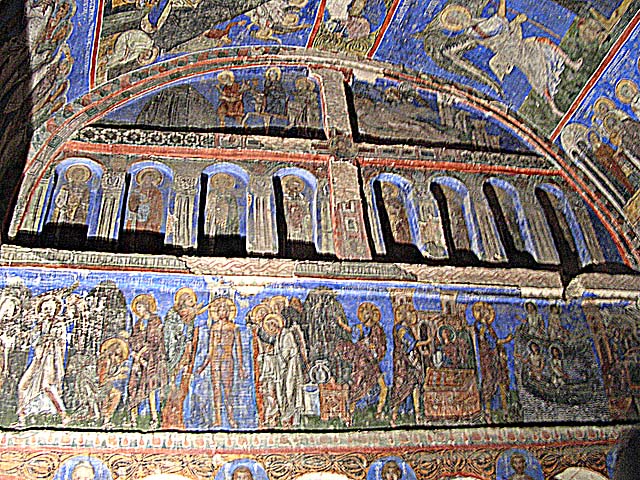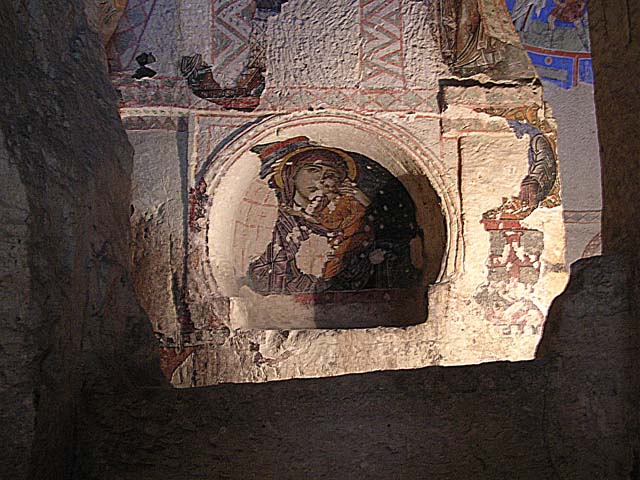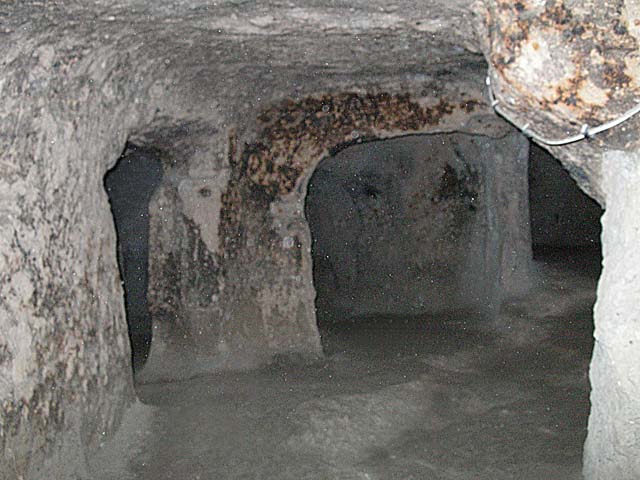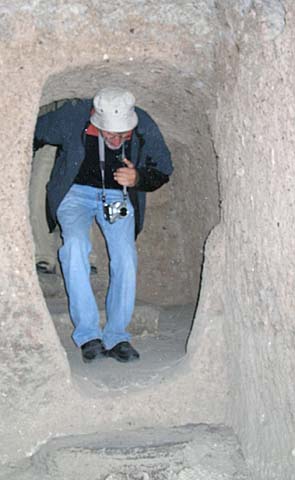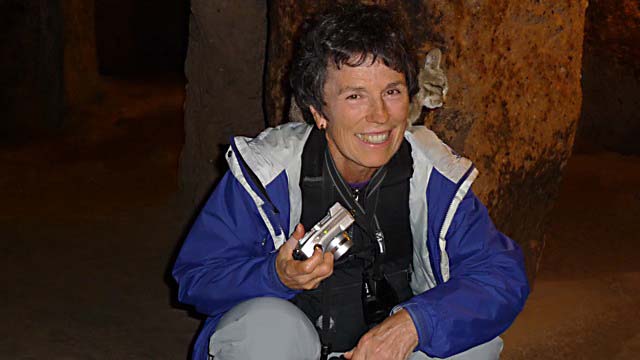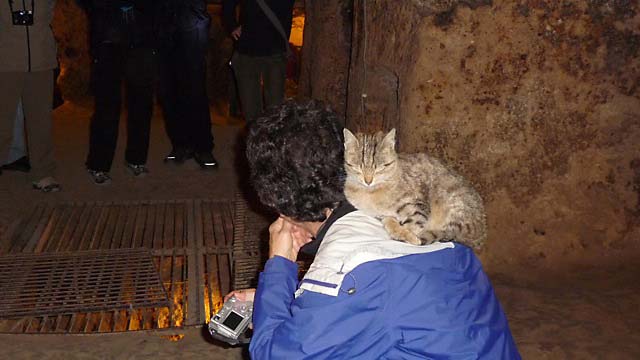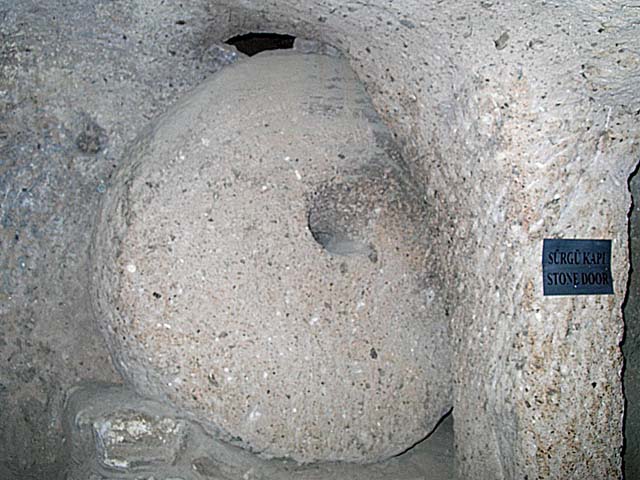TURKEY'S MAGICAL HIDEAWAYS
May 22 - June 7, 2009
Page Eight
Cappadocia Area - Central Turkey
Entrance to Goreme Open Air Museum in Cappadocia area. From about the 9th century forward,
the Goreme Valley's 30 or more churches were built out of the soft volcanic tuff.
Many of the churches feature amazing Byzantine era (Eastern Roman Empire) frescoes depicting scenes from the
Old & New Testaments. UNESCO has designed the Goreme Valley a World Heritage Site.
Closeup view of one of the Goreme Churches at the Open Air Museum.
Most of the Goreme churches are fully painted inside with beautiful and historically important Byzantine murals
dating from 900-1200 AD. Most are in remarkably good condition, although nearly all the eyes of the painted
figures have been gouged out by superstitious locals. Just outside the Goreme museum exit on the right is the
Buckle Church, the largest of the cave churches at Göreme. The frescoes are the finest in Göreme, with the
richest colors and the most detail. It dates from the 10th and 11th centuries and was restored in the 1960s.
The frescoes give a comprehensive account of the life of Christ.
In the 4th century, Cappadocia became known as the "Land of the Three Saints" because of three
theologians who are still collectively known as The Cappadocians: St. Basil the Great,
his brother St. Gregory of Nyssa, and St. Gregory of Nazianzus. They contributed a great deal to Christian doctrine
in general and Eastern Orthodox thought in particular. St. Basil was instrumental in developing Christian monasticism,
of which the Goreme cave churches in his homeland are a product.
Underground city of Kaymakli in Cappadocia. Early Christians, escaping from the persecution of the Roman
Empire, came to the Cappadocia area. They hid in underground cities whose gates were made in such way
that they couldn't be easily observed. Since they had to live in the underground cities for long durations
without being able to go out, they developed these underground cities by making kitchens, ventilation
shafts, wine production places, churches, stables, water wells, grain storage, and sleeping quarters.The most
commonly held view is that the cities were initially excavated during Roman times though some may have
existed in the Bronze Age. During the Roman era, the region was often beset by internal strife in the form of
persecutions of local Christian communities, and external attacks by the Arabs. After the region was incorporated
into the Ottoman Empire, the external threat abated, and with the outbreak of peace, the abandonment
of the underground cities began. The underground city of Kaymakli was discovered in 1964. It is believed to have
housed thousands of people from the 6th to 9th centuries. Five levels are open to the public, but it is
believed Kaymakli had 8 levels. It is not known when the first floor was originally excavated, but the underground
area covers about 1 square mile. The largest underground city that has been discovered, Derinkuyu, is
thought to have housed 20,000 people. A long tunnel was supposed to have linked Derinkuyu
with Kaymakli about 6 miles away.
One of the characteristics of Cappadocia is having plenty of underground cities. It's thought that there could be
more than a hundred underground settlements in the region and many of them are not open for visits. Can you
imagine living in these underground cities for an extended period of time? Today you can tour ones that are open
taking advantage of the lights and electricity that have been installed to help find your way around.
One of the passageways from one level to another
in Kaymakli. Even I had to bend over to get through it.
While touring the underground city, a young, stray cat was following us. When I stooped to take a picture, he
jumped on my shoulders, settled in, started purring like crazy, and went to sleep behind my neck.
Here is the sleeping cat on my back and neck. When we were ready to leave this underground room,
someone had to lift him off so I could proceed.
Stone door that was rolled to block an entrance way so that enemies could not enter an underground city.
Link to Page 9 - Cappadocia continued
Link to Page One of Turkey- Istanbul
Pat's Home Page
